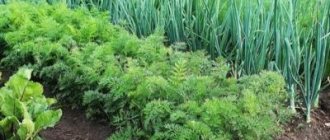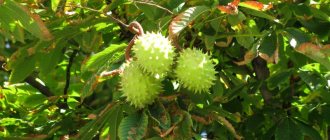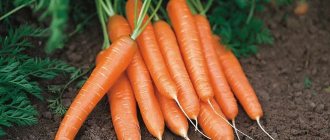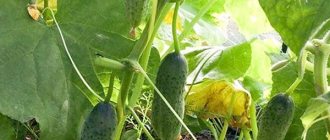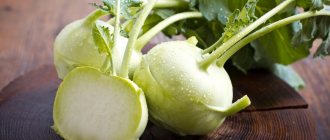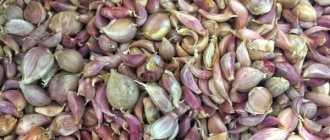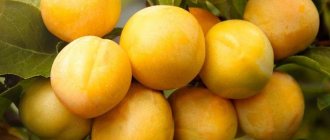What it is?
The obvious fact is that it was the color of the root vegetables themselves that gave the name white carrots. It owes them to the absence of beta-carotene, the same one that makes ordinary carrots orange. Externally, except for its color, white carrots are not much different from their relatives. One of the differences is a strong pleasant aroma due to the high content of essential oils. It is believed that white carrots originate from Afghanistan, Iran and Pakistan.
- The plant is often confused with parsnip. They are really similar in appearance - white rhizome, both belong to the umbelliferous family. But upon closer examination it will be difficult to confuse them. A characteristic difference is that parsnips are larger and darker than white carrots.
- Another erroneous comparison with turnips. Indeed, there are varieties of white turnips with an elongated and thin rhizome, but they also have little in common with white carrots.
A Brief History of Breeding
The ancestor of all varieties of carrots is considered to be wild white carrots, which have a bitter taste and are suitable only for animal feed (wild varieties of carrots are described here). White, red and yellow carrots began to be cultivated back in the 14th and 15th centuries in Germany, France, England and the Netherlands. Even later - in the 17th century, Dutch breeders were able to develop cultivated varieties from such carrots that were without bitterness, juicier and much more palatable (we talked about Dutch varieties of carrots here).
Breeders obtained varieties of modern white carrots relatively recently. The basis for them, as well as for orange varieties, is considered to be oriental yellow varieties.
Origin of white carrots
It is believed that the birthplace of the plant is Afghanistan. Other sources also name Iran and northern India (present-day Pakistan). The ancestor of all varieties of this vegetable is wild carrots. It has been cultivated as an economic crop for about 4,000 years. Surprisingly, at first it was grown for its fragrant tops and seeds. The annals of history mention the food use of root vegetables only from the 1st century AD. e.
But only in the 14th-15th centuries did white carrots, along with orange and red varieties, penetrate into Europe. Germany, England, France, and the Netherlands became interested in culture. Because the root vegetables had a bitter taste, they were grown as livestock feed.
It was only in the 17th century that the Dutch developed a sugar variety suitable for culinary use. And modern varieties of white carrots were obtained quite recently, in the 20th century. They were bred from yellow plant species that grew in the Middle East and South Asia.
How is it different from other types?
Externally, the varieties of white carrots, except for the color of the rhizome, are no different from their relatives, but in terms of qualities and properties it will be difficult to find a replacement for them. Main differences:
- white (or ivory-colored) rhizomes;
- very juicy and sweet root vegetable;
- pronounced pleasant aroma (due to essential oils);
- delicate thin skin;
- lower calorie content compared to orange varieties;
- Suitable for allergy sufferers (those who cannot eat colored vegetables).
Where does it grow?
In nature, white carrots are most often found in Mediterranean countries. When grown independently, it grows best in the temperate climate of the CIS countries. In Russia, it is best to grow it in open ground in the southern regions. White carrots can be grown anywhere in greenhouses.
- It is better to plant white carrots in light, loose, “breathing” soils, in neutral or slightly acidic soils.
- It is better to plant seeds in the place where cucumbers, cabbage, tomatoes or onions grew. But after parsley or dill it will grow very poorly; the soil after them needs to be treated.
Horned
Often the result of improper care of carrots is ugly, branched roots. This “horniness” is not a serious defect. Root vegetables most often do not lose their taste, but it will be quite difficult to clean and process them due to the numerous protruding roots.
Why does a vegetable become horned?
There may be several reasons:
- Unsuitable soil. Heavy, rocky soils can cause “tails” to appear on carrots. Soils with high acidity also promote the growth of branched root crops. Conclusion: select light, loose soil for vegetables. It is advisable that they include sand; if it is not, add it yourself by mixing the soil prepared for planting with it. The soil needs to be loosened periodically to ensure air access to the roots.
- The source of the problem may be improper weeding or thinning of carrots. This must be done very carefully, because if you pull out a plant next to a carrot sprout, you may hit the root, which will later sprout a new shoot at the site of damage.
- Insufficient soil moisture. In this case, the upper part of the root crop will be thick, and towards the end it will thin out and branch into many shoots in search of moisture and nutrients.
- Vegetable damage by pests such as mole crickets or carrot flies.
Be careful with organic fertilizers. Carrots do not tolerate fresh manure, and its application can also cause the growth of numerous “horns”.
Most popular varieties
What are the names of the most common varieties of this root vegetable? Among the white carrot varieties there are leaders that have been proven for decades. Of these, three hybrids “Lunar wite”, “Waite satin” and “White Belgian” stand out.
Lunar white
The variety was bred specifically for use in cooking. It has a juicy, sweet and delicate taste. The root vegetables are thin, with thin and delicate skin, and grow no more than 30 cm.
Early ripening - you can start collecting root crops after just 2 months. A temperature of +16, +20 degrees and good watering are enough for it to produce a bountiful harvest. At the same time, “Moon White” is demanding in terms of conditions and care - it needs black soil, stable temperature, planting at clear intervals and regular abundant watering.
Under the right conditions, the variety can be stored well for up to a year. Due to its early ripening, the variety is suitable for regions with cold climates (Ural, Siberia); in the south, you can get several harvests in one season. The cost of one bag of Lunar wite is on average 40 rubles per piece.
Waite satin
The leader among white varieties in terms of taste. And in general one of the most popular varieties. Its root vegetables are snow-white on the outside (the flesh is more creamy), smooth, juicy and crunchy, elongated cylindrical in shape with a sharp tail. Fruit length 25-30 cm, weight 100 grams.
The variety is early ripening; it only takes two months to ripen; the entire cycle from planting to ripening takes an average of one hundred days (read about varieties with different ripening periods here). It is also demanding on the soil, regularity of watering, heat and light-loving. Buy the Waite satin variety for an average price of 21 rubles per package.
White Belgian
In European countries it is also called “Blanche A Collet Vert”. The variety was developed from white fodder carrots, once popular in France in the 19th century. The root vegetables are spindle-shaped, large (up to 25 cm), the fruit itself is white, but the flesh is yellowish. The upper part (“shoulder”) becomes greenish. “White Belgian” is early ripening, shoots appear within 1.5 weeks, after 2.5-3 months it is completely ready for harvesting.
The variety is not picky about soil , like the previous ones, it grows easily in open ground and does not require special fertilizer. The downside is that it is very unstable to low temperatures; for seedlings to appear, a temperature of at least +10 degrees is required, but sudden frosts can kill all seedlings.
“White Belgian” is significantly inferior in taste; it reveals its taste only after heat treatment - boiling or frying. The cost of the Belgian White hybrid reaches 180 rubles.
The best seeds for planting before winter
Pre-winter sowing of vegetable seeds guarantees the first harvest by the end of May - beginning of June.
There are 3 reasons why such sowing is needed:
- The harvest is a couple of weeks earlier than usual.
- In the fall, there is more free time to prepare the beds for sowing.
- Savings: the space vacated after harvesting can be reoccupied, but with other vegetables or herbs.
As winter approaches, carrot seeds are sown.
We invite you to watch an informative video about planting the best varieties before winter:
Monastyrskaya
Monastic carrots have conical fruits with a slightly pointed end and a convex head, contain carotene and sugar, reach a length of 18-20 cm. They are stored for a long time.
Dobrynya
The root crop is conical, the tip is elongated, weight – up to 220 g.
Beauty maiden
The variety is suitable for salads and juices . Children love the bright orange conical fruits with a blunt tip for their sweetness and juiciness. Resistant to flowering - this is when a biennial plant blooms in the first year of life, which, as a rule, leads to a decrease in the quality of roots and leaves.
Nantes Semco-Junior F
The mid-season hybrid has good taste properties and is resistant to cracking. Length – 18-20 cm.
Nantique Resistafly F
The early ripening hybrid contains a lot of β-carotene, juice and sugar. Resistant to blooming, length – 16-18 cm.
Pharaoh
A very tasty sweet early variety , the weight of each fruit is 110-150 g.
Olympian F
A huge mid-season hybrid, 20-23 cm long, rich in carotene. The fruits are cylindrical, with excellent taste.
Children's sweet
One of the most productive seed varieties with tender, sweet pulp . It has increased shelf life, high levels of carotene and sugar.
Our nanny F
Ultra-ripe hybrid with large green tops and tender pulp. Used fresh, for squeezing high-quality sweet juice and puree.
Chantenay Royal
The mid-season variety is suitable for early harvest and winter storage. The taste is excellent.
In our other articles, you will learn about why carrots grow with defects, about vegetable diseases, including carrot flies. We will also talk about the popular varieties Abaco and Canada F1.
In conclusion, we can emphasize the usefulness and indispensability of a vegetable such as carrots. It not only has a variety of species and colors, but is also used in cooking, medicine, cosmetology, and as a fodder plant for animals. Its sweetest and largest varieties are loved by both adults and children. And of course, it serves as a whole vitamin complex that strengthens the body in early spring, after winter vitamin deficiency.
Chemical composition of root vegetables
In terms of its chemical composition, white carrots differ little from their colored counterparts. The main difference is the absence of beta-carotene. If we talk about the vitamins and minerals contained in white carrots, then there are plenty of them:
- ascorbic acid;
- vitamin B complex (thiamine, riboflavin, retinol, geranol, folic acid and others);
- vitamins: E, K and H;
- minerals (potassium, calcium, sodium, magnesium, phosphorus, sulfur and chlorine);
- trace elements: (zinc, iron, copper, fluorine, iodine, manganese, selenium, boron, lithium and others);
- bioflavonoids;
- essential oils;
- amino acids;
- coarse fiber;
- pectin.
It is also noted that white carrots contain fewer calories than orange ones .
Properties
Benefit
Such a vegetable, rich in nutrients, when regularly consumed in raw and processed form (even with heat treatment, most of the vitamins in white carrots are retained) has a very beneficial effect on the human body:
- The fiber content improves intestinal function and normalizes digestion, and is useful for cancer prevention.
- Reduces the risk of strokes and helps prevent atherosclerosis.
- Prevents disorders of the nervous system and brain (including Alzheimer's disease).
- Replenishes the lack of vitamins and minerals in the body.
- Suitable for the diet of allergy sufferers and baby food (in this material you can learn about the “Children's Sweetness” variety).
- Has a diuretic and choleretic effect.
- As a natural antioxidant, it rejuvenates the body.
- Fights inflammatory processes, suppresses pathogenic bacteria.
- Effective in the fight against helminths.
- Restores strength, relieves pain and fatigue.
- Strengthens the immune system.
- Normalizes intestinal microflora, indicated during recovery after antibiotic treatment.
- Used as a mucolytic agent.
- Normalizes blood sugar levels, recommended for diabetes.
- The copper, zinc and nickel content help purify the blood.
- Proven effect for the prevention of cancer.
Harm
White carrots are not capable of causing obvious harm, but they also need to be consumed in reasonable quantities. Moreover, a large amount of vitamins in it can lead to hypervitaminosis. True, for this you need to eat a huge amount. And side effects are so rare that they are rather the exception to the rule. So, how can white carrots harm you:
- Still, it can cause allergies if consumed too often (due to carbohydrates and essential oils).
- May cause inflammation of the intestinal mucosa, constipation or diarrhea and exacerbation of gastrointestinal diseases.
- Dizziness, weakness and nausea, rapid heartbeat due to an overdose of B vitamins and ascorbic acid contained in white carrots.
- Have an excessive diuretic effect.
- Exacerbation of thyroid diseases (diseases of the endocrine system should be treated with caution).
However, the symptoms described above appear extremely rarely and are rather an unfortunate exception to the rule.
Use in cooking
The unsightly appearance of black carrots is more than compensated by its taste. Under the dark, almost black top layer, there is a white, juicy pulp that tastes like asparagus or radish and has a pleasant vanilla scent.
The root vegetable goes well in taste with various vegetables (cabbage, regular carrots, beets), meat and fish. It can be boiled, stewed, added to soups, stews, and other main courses, and used as a side dish for fish and meat dishes, to which it adds a special piquancy. It can be consumed raw. After first clearing the top dark layer, cutting into circles and adding vegetable oil. Freshly squeezed black carrot juices are a real storehouse of vitamins and microelements. They can be drunk either separately or by adding others, for example, apple juice. An amazing effect can be achieved by adding scorzonera juice while preparing jelly or marmalade. The finished product receives a rich purple hue.
Not only the root vegetable itself can be used for food, but also the above-ground part of the plant. The leaves are thoroughly washed and cut into small pieces, and then added to salads, saturating them with vitamins and giving a delicious taste. Season black carrot salads to taste: sour cream, mayonnaise, soy sauce, vegetable oil, lemon juice.
Step-by-step instructions for growing
Preparing for landing
- When planting white carrots, you will need traditional equipment: a shovel and a hoe, both must be clean, free of particles of fertilizer and other things.
- White carrots grow best in neutral and slightly acidic soils, as well as in black soil and light loam. If you plan to plant white carrots in winter, it is better to choose peat or sandy soil. In the autumn, potassium and phosphate fertilizers can be applied. You should first dig up the ground.
- Seeds must be prepared before sowing - soaked for about a day in water or a fertilizer solution. To ensure that the seeds are distributed evenly, it is recommended to mix them with sand (about 1 teaspoon of seeds per glass of sand). Germination time is 18 - 20 days.
Process
White carrots usually begin to be sown in mid-spring. Winter crops are planted starting in October. If the crop is needed by the end of summer for storage, it is better to sow in May-June. The beds are made in the form of furrows with a hoe, then the seeds are evenly distributed in them.
In the planting scheme, it is better to focus on the characteristics of a particular variety (indicated on the packaging). But it is always necessary to take into account that the root crop will need space to grow, and it must be provided.
- the distance between rows must be at least 30 cm;
- after thinning, you need to maintain a distance of 5-15 cm;
- sowing depth is slightly less than 5 cm in summer and 5 cm in winter.
Care
- The main principle in caring for white carrots is to provide them with the necessary microclimate:
- the soil temperature should be at least 8-10 degrees;
- It is necessary to cover the beds after sowing with a damp cloth to ensure humidity and air access.
- After planting, white carrots do not require frequent watering; after sprouts appear, they need to be watered more often, but during growth and ripening, watering should be limited to 2 times a month. During the ripening of root crops, it is better to reduce watering to a minimum.
- Carrots are fed only three times during the entire growth period. The first - after the appearance of the first shoots, then at intervals of a month. Fertilizing is carried out only with mineral fertilizers; fertilizers should be applied only after watering.
- Loosening is a necessary step in caring for white carrots. She loves air. It is better to loosen the soil immediately after the sprouts appear. The next time after thinning - between the rows, as they grow, between the plants. Grown root crops must be hilled up so that a green edging does not appear on the protruding part.
- White carrots should be weeded twice during the entire growth period.
- Mulching should be done when the sprouts reach at least 15 cm. For this purpose, use fresh or dry grass, pine needles, compost, nettles, and small leaves. You can also use covering material, burlap, or cardboard. Newspaper, straw and peat are not suitable for mulching.
Harvesting and storage
- Harvesting time will depend on the variety.
- A warm and dry day is chosen.
- If the carrots are difficult to remove, you can use a shovel or pitchfork.
- The dug up carrots are sorted, those suitable for storage are treated with a weak solution of potassium permanganate and dried in the open air at an air temperature of 15 degrees.
- It is better to store carrots in a dry basement at a temperature of 0 to +4 in boxes with sand, sawdust or onion peels.
We have written about other varieties of carrots in other articles. We recommend reading about black, purple and yellow carrots, as well as the Flakke variety and Children's Sweetness.
How to store?
Root vegetables can be stored for quite a long time, but the most important condition that must be observed in the room intended for storage is a constant cool temperature.
That is why the ideal place to store vegetables for the winter is always the cellar.
Conditions that should be in the cellar:
- average humidity: 80% and above;
- air temperature within +1-8C;
- minimum light;
- availability of ventilation.
Important! Good owners always prepare the cellar for storing vegetables. To do this, treat the walls, floor and ceiling with lime, and, if possible, fumigate the room before each harvest.
Of course, they must get rid of the remnants of last year’s supplies and inspect all corners for rodent burrows and other pests.
As root crops are stored, they must be periodically inspected and sorted. Sick, rotting, spoiled vegetables must be disposed of immediately.
Basically, they try to adapt the cellar for storing large volumes of food. But if there are too many root vegetables (this often happens with carrots, beets, turnips), then they should be placed in bulk.
And in order to eliminate or reduce rotting, be sure to sprinkle the pile with earth or dry sand. Of course, it is correct to store different vegetables and root vegetables separately from each other.
Diseases, pests and their prevention
White carrot varieties, just like any other, can be susceptible to diseases and pest attacks. The fight against them follows the same scheme as for orange varieties:
- of black rot by spraying the sprouts with Rovral.
- Cercospora can be defeated using a solution of Bordeaux mixture.
- Powdery mildew and bacteriosis will disappear if the plant is treated with fungicides.
- Felt disappears after treatment with a solution of copper chloride.
- Carrot flies, psyllids, carrot moths will be destroyed by VDG, Decis Profi and others. Folk remedies include soap solution, ashy infusion or decoction of tomato tops.
- vinegar from mole crickets.
To prevent bedub diseases, carrots are processed in June. To do this, you can treat the ground parts with nettle infusion. Immunocytophyte and other immunity products will also help with bioactive agents that improve the plant’s immunity.
Usage options
- Raw - in the form of salads, juice, just whole.
- During heat treatment: boiled, fried, stewed.
- I make healing tea from the tops.
- For medicinal purposes, a decoction of the root vegetables themselves is used.
White carrots are not just exotic, which is gaining more and more popularity. This is a tasty, healthy and versatile vegetable, which, with proper care, is quite easy to grow in our country on your own.
If you find an error, please select a piece of text and press Ctrl+Enter.
How to choose white carrots
You should not buy root vegetables if:
- they are soft to the touch - the carrots have been stored for too long and have largely lost their valuable qualities;
- the remains of the tops are dark, dry, withered - this means that these are too old vegetables;
- the fruits have many branches - such a symptom indicates obvious violations of agricultural technology.
